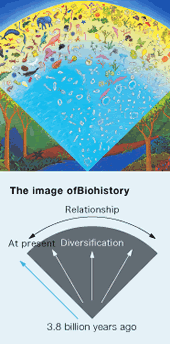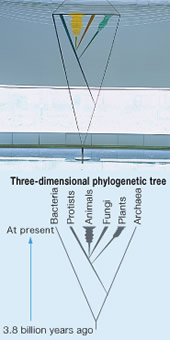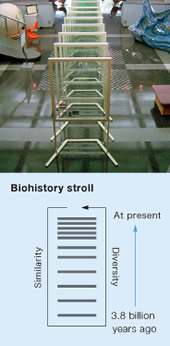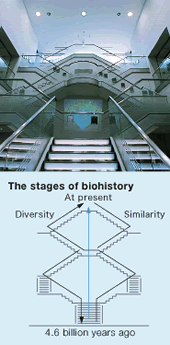Biology textbooks are written using words and figures, which are exactly what is found in scrolls. Scrolls are comprised of written text, such as stories and biographies, and illustrations. The scroll surface is very long, consisting of paper that has been glued together, so today they are frequently unrolled in display cases and the visitor views them while walking along. Originally, however, they were intended to be viewed when held in both hands spread out at shoulder width. The viewer repeatedly rolled up the open portion with the right hand while opening the rolled portion with the left hand.
The scrolls were created to preserve material written on silk or paper by rolling it up. After scrolls were brought from China, new developments were added in Japan. It is very interesting that the long, horizontal picture composition that progressed to the left was skillfully used to express time in narratives.
Long stories literally became long scrolls. The dynamic and continuous viewing method became a device for developing the setting of the story and providing an experience of the passage of time.
It has been stated* that the Japanese passion for stories in scrolls originated in their temporally-based world view. Seasons change over time, and life begins and ends. The story and historical fact were entrusted to the temporal aspects of the scroll, and this aspect has been handed down to the present. When linking past, present, and future, we experience a sense of living in the development of the story as we unravel the connections of time.
The historical narrative of life and the fundamentals of biohistory were expressed in illustrated stories—scrolls. There are said to be 50 million species of living creatures on the earth, and they are compatriots created from ancestors who were born about 3.8 billion years ago. How these diverse creatures were born and what relationship they have is a story that has a connection to every one of us. We made the effort to create a three-dimensional biohistory scroll to enable people to experience this for themselves, and to see and sense the time possessed by living creatures. This includes the three-dimensional phylogenetic tree, which visitors enjoy by looking at its height stretching all the way to the ceiling; the biohistory stroll, in which visitors look through the different glass layers as they walk; and the biohistory stairs, rising to the fourth floor of the hall, which go back 4.6 billion years from the creation of the earth. The text of the biohistory scroll will become even more interesting as research progresses. It is a lot of fun to understand something by seeing it. Our objective is to consider an expression that perceives diversity, complexity, and the whole, and create new scrolls in the future.
Naoko Kitaji
Toyomune Minamoto, "Nihon Bijutsu no Nagare (Trends in Japanese Art)" 1976 |
|




